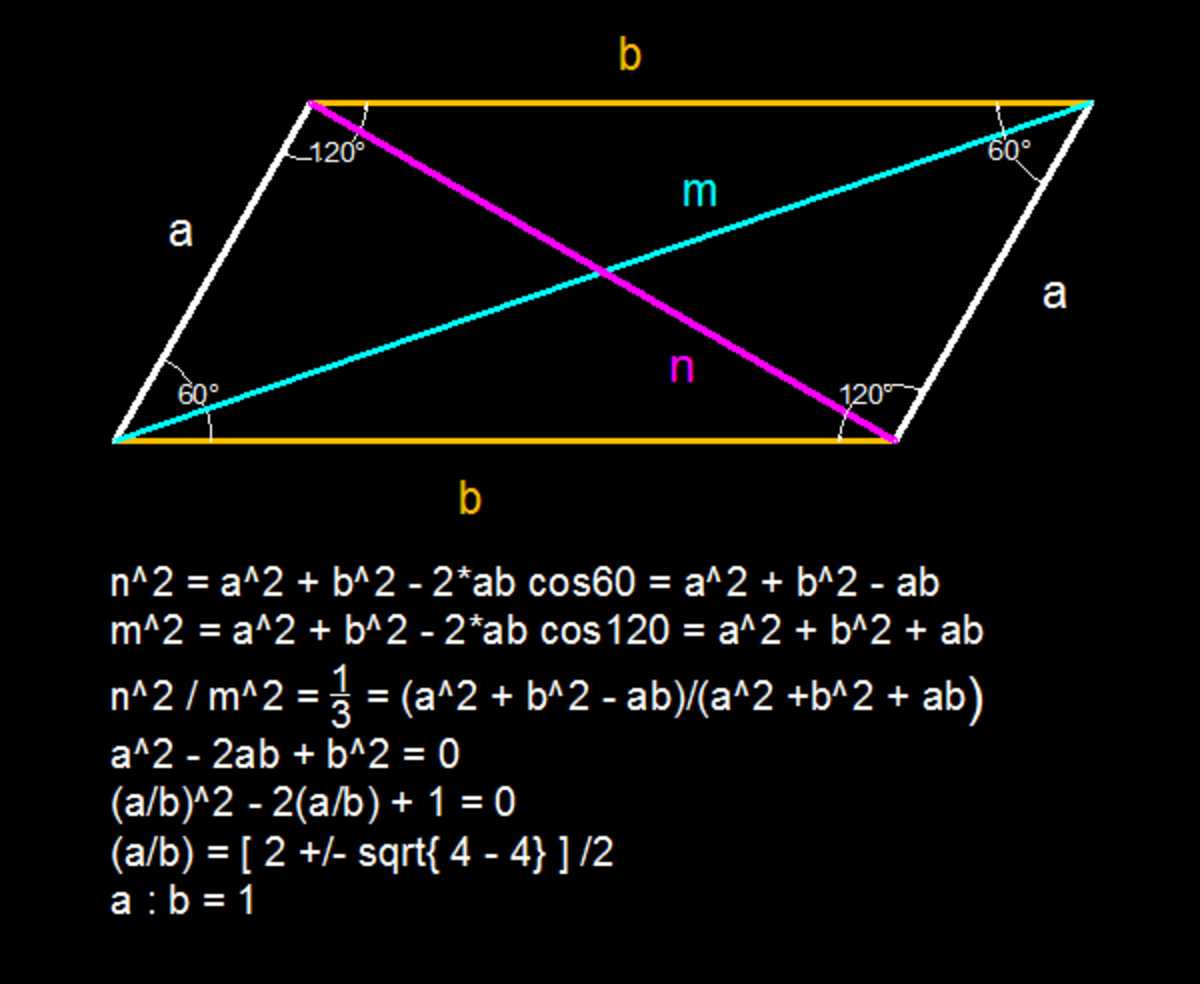Try Geometry!
Given a parallelogram whose acute angle is 6 0 ∘ . Find the ratio of the lengths of the sides of the parallelogram if the squares of the lengths of the diagonals have a ratio of 1 : 3 .
The answer is 1.
This section requires Javascript.
You are seeing this because something didn't load right. We suggest you, (a) try
refreshing the page, (b) enabling javascript if it is disabled on your browser and,
finally, (c)
loading the
non-javascript version of this page
. We're sorry about the hassle.
3 solutions

Very good use of Cosine rule , + 1 !
Solution using complex numbers:
Let one side of the parallelogram be represented by a ( a ∈ C ).
Then the other side is a r e i 3 π ( r ∈ R + ) where r is the ratio of the sides.
The given data is equivalent to the following equation: ∣ a ( 1 − r e i 3 π ) ) ∣ 2 ∣ a ( 1 + r e i 3 π ) ) ∣ 2 = 3
Solving this equation, we get r = 1
AWESOME SOLUTION ! +1 !
A parallelogram whose acute angle is 6 0 ∘ is a Rhombus.
Why is that necessary?
Log in to reply
I tried to minimize my solution. Adding a proof is easy. I can certainly add a proof.
Log in to reply
Ok then please add a proof . Thank you.
Log in to reply
@Rishabh Tiwari – I don't want to spoil the fun of a one liner :P
I'll give an incomplete hint to you to start with
Notice that the diagonals divide opposite angles into two equal halves each. Let ABCD be a Parallelogram with the Diagonals bisecting at O. (Diagonals of a //gm bisect each other)
Consider Triangle AOB with Angle A as the acute angle
Angle OAB is 30 degrees and Angle ABO is 60 degrees.
Angle AOB becomes 90 degrees. Similarly do so for Triangles AOD, DOC and COB.
You'll notice that you're done.
Log in to reply
@Mehul Arora – I agree with @Rishabh Tiwari 's objection. Plus, it is easy to constuct a parallelogram with one angle as 6 0 ∘ which isn't a rhombus. The fact that the square of the ratio of the diagonals is 3 plays a role in this problem.
Log in to reply
@A Former Brilliant Member – Exactly ! Thanx for commenting!
@Mehul Arora – Diagonals of a parallelogram don't bisect opposite angles, its the property of a rhombus! Hence I think u r wrong somewhere in that proof .
@Mehul Arora – Try this problem
can you prove it ?